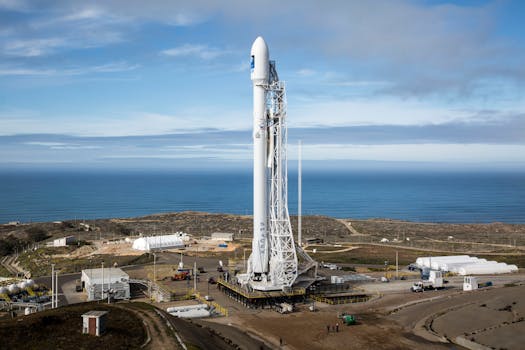Starlink: Revolutionizing Global Internet Connectivity with Satellite Technology
Starlink is a satellite constellation developed by SpaceX, a private aerospace manufacturer and space transport services company founded by Elon Musk. The project aims to provide high-speed, low-latency internet connectivity worldwide, especially in areas where traditional internet infrastructure is lacking or non-existent.
How Starlink Works

Starlink consists of a network of low-Earth orbit (LEO) satellites, each equipped with advanced communication technology. The satellites are designed to provide internet connectivity to users on the ground, using a combination of radio frequency (RF) signals and laser communication. The system uses a phased array antenna, which allows the satellites to steer and shape their beams, increasing the efficiency and capacity of the network.
The Starlink satellites are launched into orbit using SpaceX’s Falcon 9 rocket, with each launch deploying a batch of 60 satellites. The satellites are then positioned in a sun-synchronous orbit, approximately 550 kilometers above the Earth’s surface. This orbit allows the satellites to maintain a consistent view of the Earth, ensuring continuous internet connectivity.
Benefits of Starlink

Starlink offers several benefits over traditional internet infrastructure, including:
Global coverage: Starlink provides internet connectivity to remote and underserved areas, bridging the digital divide and enabling access to information and opportunities for millions of people worldwide.
Low latency: The LEO satellites used in Starlink have a significantly lower latency than traditional geostationary satellites, making it suitable for real-time applications such as online gaming, video streaming, and virtual meetings.
High-speed connectivity: Starlink provides speeds of up to 1 Gbps, making it an attractive option for businesses, governments, and individuals requiring high-bandwidth internet connectivity.
Challenges and Controversies

While Starlink has the potential to revolutionize global internet connectivity, it also faces several challenges and controversies, including:
Space debris: The large number of satellites in the Starlink constellation has raised concerns about space debris and the potential for collisions with other satellites or spacecraft.
Regulatory issues: Starlink has faced regulatory challenges, including obtaining licenses to operate in different countries and complying with international regulations regarding satellite communications.
Environmental impact: The launch of numerous satellites has raised concerns about the environmental impact of the rocket launches, including the emission of greenhouse gases and the potential for pollution.
See more:


